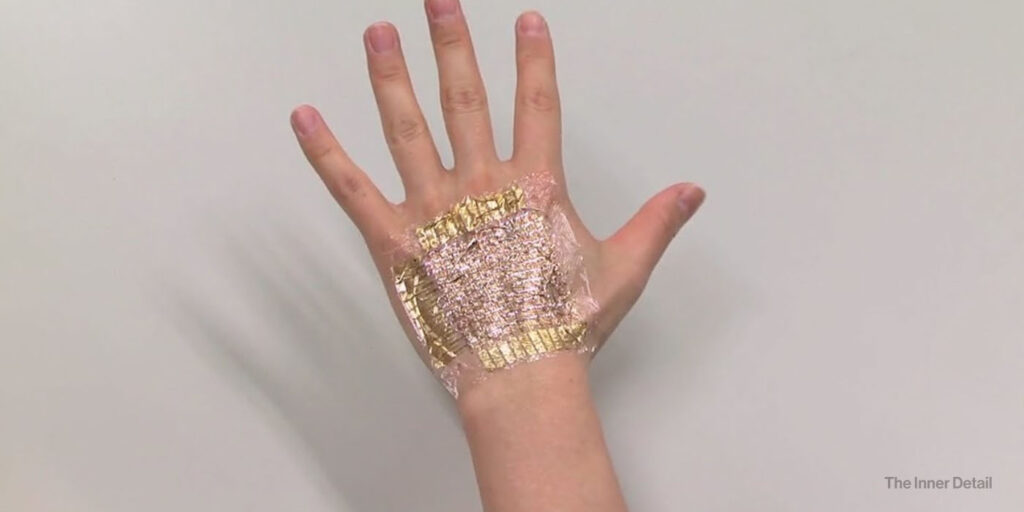Imagine interacting with devices without physically touching them, or robots gaining a sense of touch through magnetic fields. This futuristic vision is moving closer to reality with the development of a groundbreaking ultra-thin, flexible electronic skin (e-skin) by scientists at a German research lab. This innovative e-skin can detect and track magnetic fields using a single global sensor, mimicking how human skin interacts with the brain.
What truly sets this innovation apart is its ability to enable touchless interactions. This opens up exciting possibilities for operating devices in wet, extreme, or sensitive environments like underwater or sterile laboratories. Furthermore, this e-skin could revolutionize human-computer interaction and even restore certain abilities for individuals with sensory impairments.
Traditional electronic skins have typically relied on multiple sensors, batteries, and electronic components, making them bulky and power-hungry. To overcome these limitations, the researchers designed this new e-skin to function more like human skin. It comprises three key components:
- An ultra-thin, flexible membrane that serves as the base structure. This membrane is made of a lightweight, transparent, and breathable material.
- A magnetosensitive layer that covers the entire surface of the e-skin. This layer detects and processes magnetic signals using a single analysis unit. When the e-skin is near a magnetic source, this layer reacts, causing a change in electrical resistance.
- A central processing unit (CPU) that picks up this change in resistance and determines the precise location of the magnetic source.
How it works?
The e-skin utilizes a sophisticated tomography-based signal processing method for accurate source detection. This approach, inspired by MRI and CT scan techniques, enhances signal accuracy by analyzing multiple data points to reconstruct a detailed signal, much like medical imaging. Pavlo Makushko, the lead researcher, highlighted that validating this method experimentally was a “major technical achievement“ as this technology was previously considered too insensitive for conventional magnetosensitive materials.
You may also like to Read this: Latest Innovations in robotics – from Robotic Skin to brain-controlled Robotic arm!
The potential applications of this novel e-skin are vast. For humans, it could mean controlling phones with a magnetic patch on a glove, even in harsh weather conditions. It could also enable controller-free interaction with digital environments like virtual reality. Moreover, individuals with prosthetic hands could potentially interact with smartphones, overcoming the limitations of insulated prosthetics. For robots, an e-skin with human-like touch and magnetic sensitivity could significantly improve their capabilities in tasks such as cooking, rescue operations, deep-sea explorations, and patient care.
The development of this “electronic skin with brain” represents a significant leap forward in the field of wearable technology. Its unique design, mimicking the functionality of human skin and brain in processing touch via magnetic fields, and its diverse potential applications suggest that this technology could soon become commercially available and transform the way we interact with the world around us. The research findings have been published in the journal Nature Communications.
(For more such interesting informational, technology and innovation stuffs, keep reading The Inner Detail).
Kindly add ‘The Inner Detail’ to your Google News Feed by following us!

